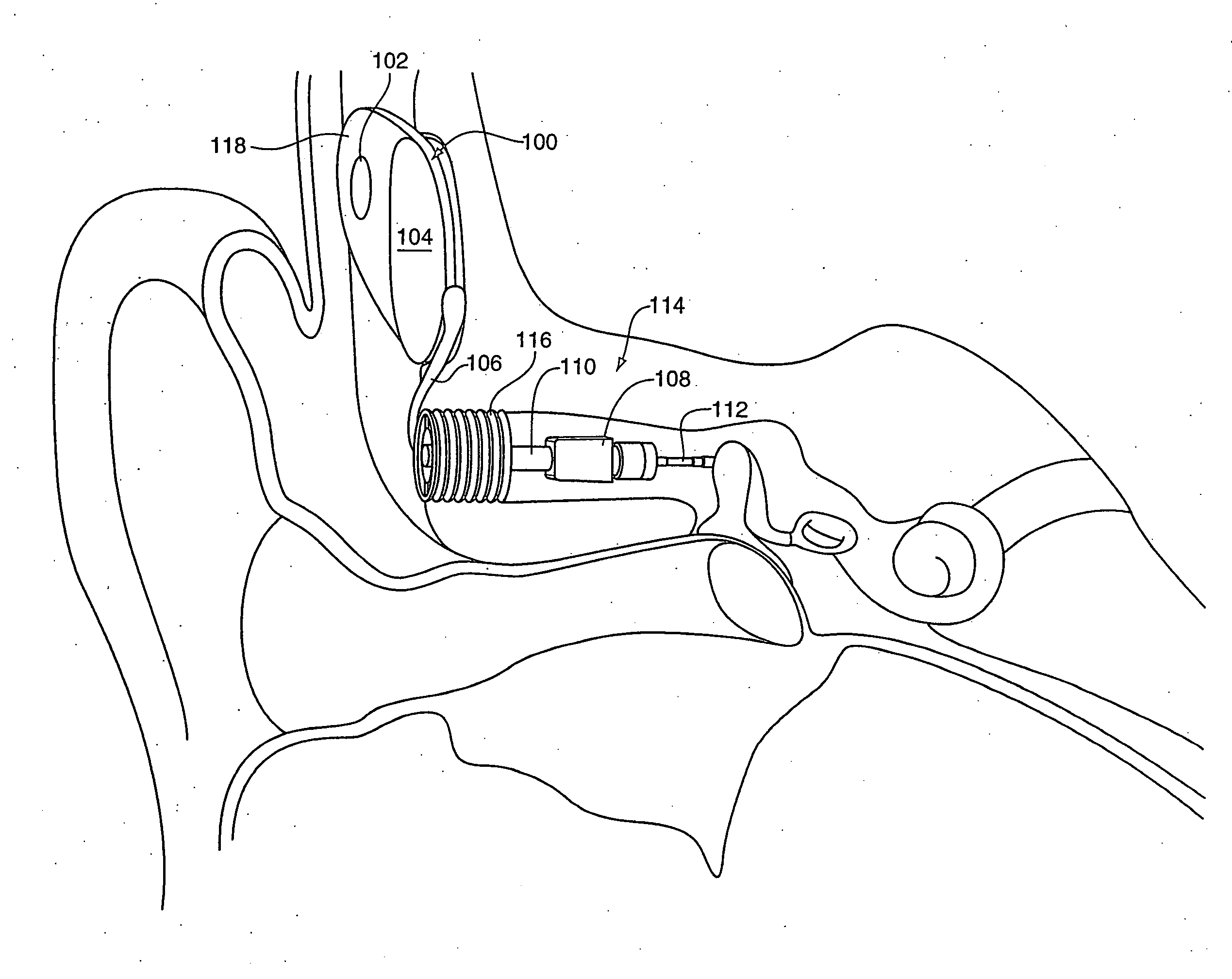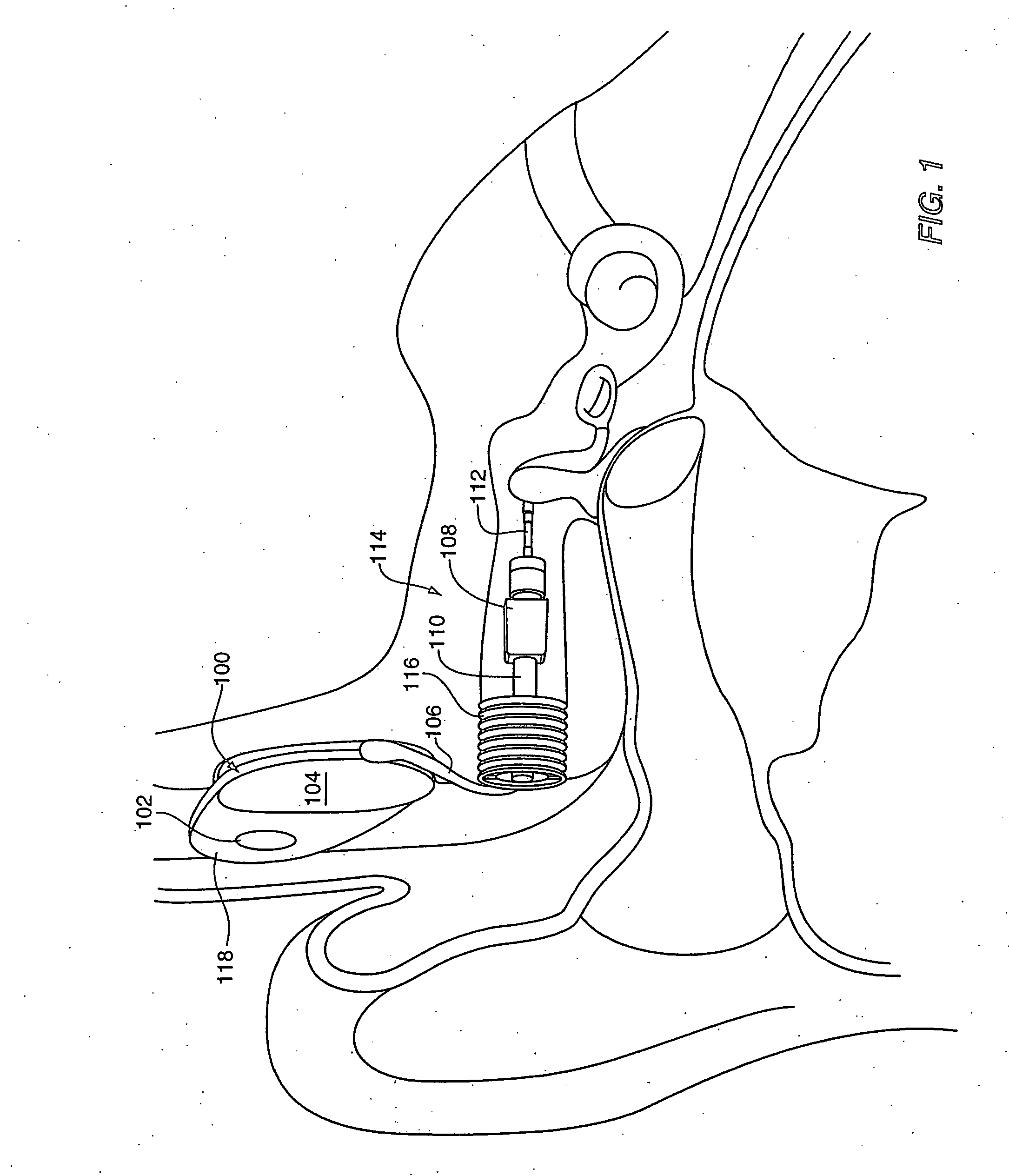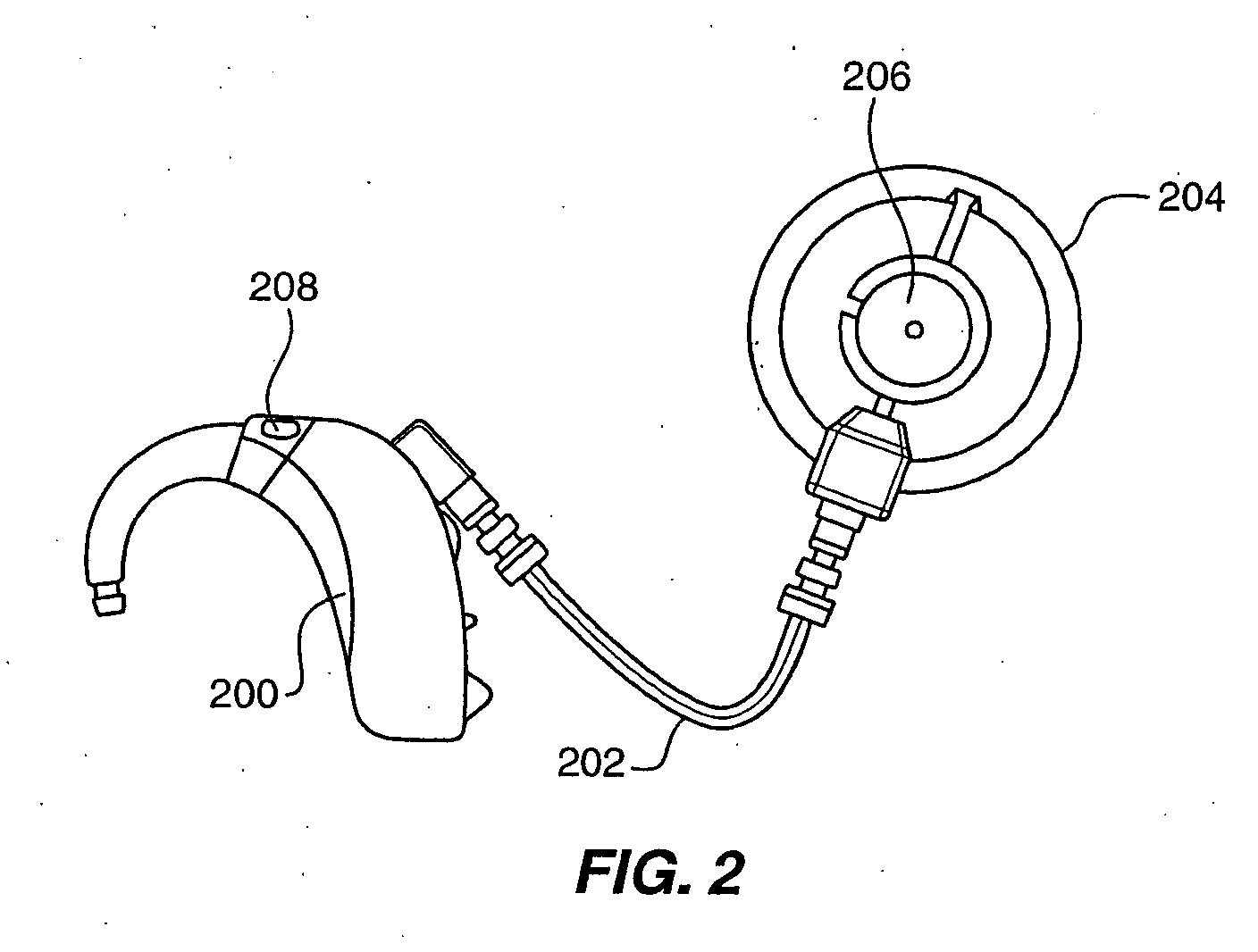Method and system for external assessment of hearing aids that include implanted actuators
a technology of actuators and hearing aids, applied in hearing aid testing/monitoring, hearing aid adaptation, medical science, etc., can solve the problems of devices suffering from several drawbacks, degrading the performance of biological aspects, and affecting the performance of hearing aids, etc., to achieve simple and straightforward evaluation and simple office visit.
- Summary
- Abstract
- Description
- Claims
- Application Information
AI Technical Summary
Benefits of technology
Problems solved by technology
Method used
Image
Examples
Embodiment Construction
Hearing aid system:
[0044] Reference will now be made to the accompanying drawings, which at least assist in illustrating the various pertinent features of the present invention. Although the present invention will now be described primarily in conjunction with semi-implantable hearing aid systems, it should be expressly understood that the present invention is not limited to this application, but rather, only to applications where positioning and assessment of an implantable device within a patient is required.
[0045]FIGS. 1 and 2 illustrate one application of the present invention. The illustrated application comprises a semi-implantable hearing aid system having implanted components shown in FIG. 1, and external components shown in FIG. 2. As will be appreciated, the present invention may also be employed in conjunction with fully implantable systems, wherein all components of a hearing aid system are located subcutaneously.
[0046] In the illustrated system, an implanted biocomp...
PUM
 Login to View More
Login to View More Abstract
Description
Claims
Application Information
 Login to View More
Login to View More - R&D
- Intellectual Property
- Life Sciences
- Materials
- Tech Scout
- Unparalleled Data Quality
- Higher Quality Content
- 60% Fewer Hallucinations
Browse by: Latest US Patents, China's latest patents, Technical Efficacy Thesaurus, Application Domain, Technology Topic, Popular Technical Reports.
© 2025 PatSnap. All rights reserved.Legal|Privacy policy|Modern Slavery Act Transparency Statement|Sitemap|About US| Contact US: help@patsnap.com



